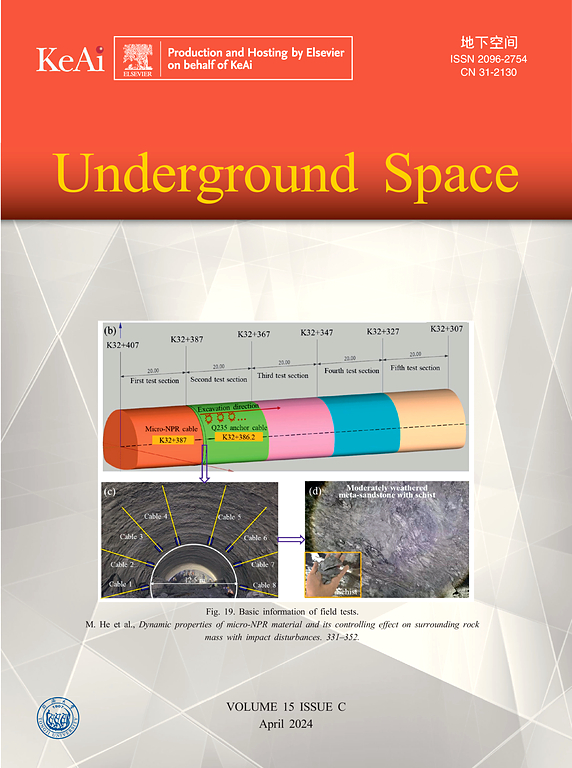Automated design framework for excavation retaining structures: Extending IFC standards and integrating BIM with geotechnical simulation
IF 8.3
1区 工程技术
Q1 ENGINEERING, CIVIL
引用次数: 0
Abstract
Challenges arise in automate design with building information modeling (BIM) in underground space. Industry foundation classes (IFC) standard lacks detailed entity objects for describing excavation retaining structures and geological information, and automated design based on BIM models is not yet for practical application. This study presents a novel automated framework. It integrates the extended IFC standard with mechanical analysis and BIM modeling, significantly advancing structural optimization and rebar detailing. Direct 3D model generation streamlines complex excavation projects, aligning with the trend towards automated, precision-driven design. Key contributions include: (1) the extension of the IFC standard to support excavation retaining structures with objects like IfcBracedPit and IfcPitWall, improving interoperability between geotechnical models and BIM systems; (2) the integration of heuristic algorithms for automated optimization of deformation control parameters, reducing manual intervention; and (3) the promotion of design methodology that bypasses two-dimensional modeling and directly generates three-dimensional models, enhancing efficiency and allowing engineers to focus on high-level decision-making. However, the framework is primarily suited for standard cross-section projects like subway stations and tunnels. Future work will focus on refining the framework for more complex geotechnical projects, addressing software independence and improving design robustness and independence.
开挖挡土结构的自动化设计框架:扩展IFC标准并将BIM与岩土模拟集成
建筑信息模型(BIM)在地下空间自动化设计中的应用提出了新的挑战。行业基础类(IFC)标准缺乏详细的实体对象来描述开挖支护结构和地质信息,基于BIM模型的自动化设计尚未得到实际应用。本研究提出了一种新的自动化框架。它将扩展的IFC标准与力学分析和BIM建模相结合,显著推进了结构优化和钢筋细节设计。直接的3D模型生成简化了复杂的挖掘项目,符合自动化,精确驱动设计的趋势。主要贡献包括:(1)扩展了IFC标准,以支持使用IfcBracedPit和IfcPitWall等对象的开挖挡土结构,提高了岩土模型和BIM系统之间的互操作性;(2)集成启发式算法实现变形控制参数的自动优化,减少人工干预;(3)推广绕过二维建模直接生成三维模型的设计方法,提高效率,使工程师能够专注于高层决策。然而,该框架主要适用于标准截面工程,如地铁站和隧道。未来的工作将侧重于为更复杂的岩土工程项目改进框架,解决软件独立性问题,提高设计的稳健性和独立性。
本文章由计算机程序翻译,如有差异,请以英文原文为准。
求助全文
约1分钟内获得全文
求助全文
来源期刊

Underground Space
ENGINEERING, CIVIL-
CiteScore
10.20
自引率
14.10%
发文量
71
审稿时长
63 days
期刊介绍:
Underground Space is an open access international journal without article processing charges (APC) committed to serving as a scientific forum for researchers and practitioners in the field of underground engineering. The journal welcomes manuscripts that deal with original theories, methods, technologies, and important applications throughout the life-cycle of underground projects, including planning, design, operation and maintenance, disaster prevention, and demolition. The journal is particularly interested in manuscripts related to the latest development of smart underground engineering from the perspectives of resilience, resources saving, environmental friendliness, humanity, and artificial intelligence. The manuscripts are expected to have significant innovation and potential impact in the field of underground engineering, and should have clear association with or application in underground projects.
 求助内容:
求助内容: 应助结果提醒方式:
应助结果提醒方式:


